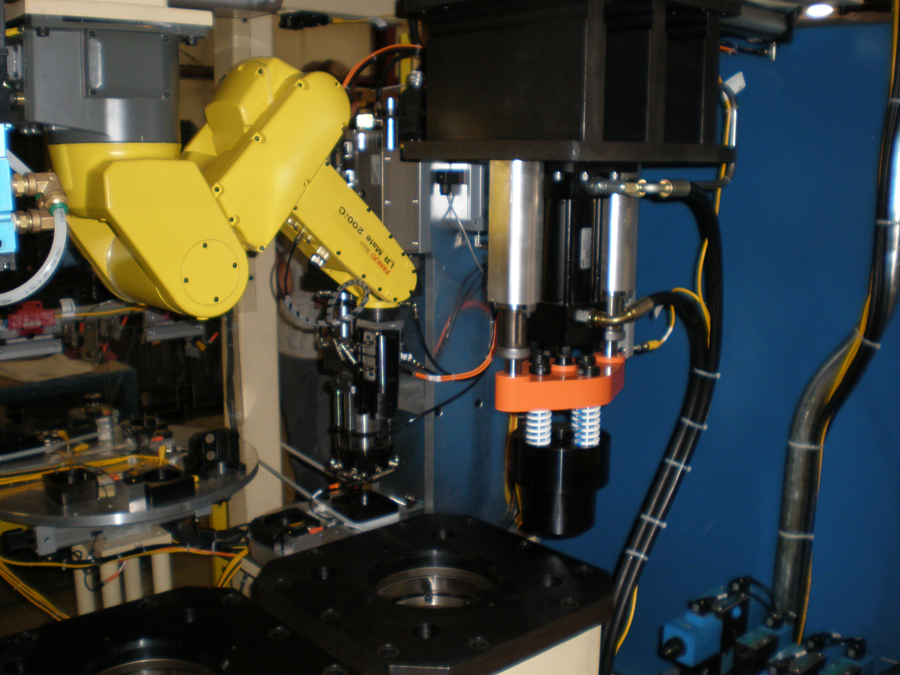
PLC vs PAC: Similar but not the same
By Zach Arnold, founder, Arnold Machine
Programmable logic controllers, or PLCs, and programmable automation controllers, or PACs, are similar as they both perform the same essential functions. But with modern technology, their differences are becoming more blurred.
The most notable difference between PLCs and PACs is their programming interface. PACs are more intricate, using C or C++. PLCs on the other hand, are programmed using ladder logic.
These programming differences create distinctions in the architecture and capability between the two computers.
PLCs and PACs are industrial computers constructed and adapted for manufacturing environments. These computers are the brains of a manufacturing operation as they control automation equipment with high reliability.
PLCs and PACs are very similar to each other as they both perform the same essential functions, and with modern technology, their differences are becoming more blurred.
All automated systems are built with a PLC or PAC to control individual machines or stations. Additionally, the computers can also be programmed to control a grouping of machines or stations.
So if PLCs and PACs perform the same function, what makes them different?
The most notable difference between PLCs and PACs is their programming interface. PACs are more intricate, using C or C++.
PLCs on the other hand, are programmed using ladder logic, a programming language that uses symbols representing an electrical schematic of relays.
These programming differences create distinctions in the architecture and capability between the two computers.
PLCs have simple program execution scans but with limited memory and discrete input / output (I/O). Modern PLCs are capable of high-speed I/O, sequencing and proportional-integral derivative control in addition to digital and analog I/O.
Many PLCs have built in networks enabling the communication between multiple PLCs, the distribution of I/Os and communication between Human Machine Interfaces (HMI) and Supervisory Control and Data Acquisition (SCADA) systems.
PLCs are particularly useful for simpler processes and smaller automation projects without the need for rapid scalability.
PACs have an open architecture and incorporate modular design. This helps multiple devices, networks and systems communicate and operate with each other. PACs are used to communicate, monitor and control equipment across multiple networks and devices.
This is possible because they utilize standard protocols and network technologies such as Ethernet, OLE for Process Control (OPC) and Structured Query Language (SQL).
By utilizing modular design, PACs simplify system expansion processes. Adding or removing components is easier to execute. PACs have the ability to monitor and control thousands of I/O points in addition to offering tag-based programming.
With tag-based programming, a single tag-name database is used for development and these tags can be assigned to a variety of functions before being tied to a specific I/O.
PACs provide more flexibility in programming, larger memory capacity and better scalability for future expansion. They are particularly useful for systems with a high percentage of analog I/O.
They are often used in systems with extensive network interface requirements and in systems with direct user interaction requirements.
What does it all mean?
Based on their differences, it appears PACs are the logical choice for any automated system, but that is simply not the case. It all comes down to what is needed currently and in the future.
There is no need to use a sledge hammer to simply drive a nail for hanging a photo frame.
Similarly, there is no need to invest in a high-powered PAC to run machinery that requires simple programming. It all comes down to the complexities of the operation.
PLCs are ideal for both simple and high speed machine control. PLCs are a more cost-efficient option for standard automation control. A capable PLC will help many automation projects perform to the best of their abilities.
PLCs operate a large variety of machines such as: automated spray equipment, dispensing systems, motion control and assembly equipment.
It’s the unique, large scale automation projects with intricate complexities that require a PAC.
That’s why PACs are great for complex automation system architectures composed of several PC-based software applications. Combine the previously mentioned systems into a single automated process and a PAC will control all of them.
As technology progresses, PACs and high-level PLCs are incorporating internet connections to send and receive data.
Adding these Internet of Things (IoT) devices to manufacturing operations increases the real-time information gathered and shared to interested parties anywhere in the world.
Their connection to the internet also enables users to remotely control the PLC or PAC and change its functions to control automation equipment in a different manner, from something as simple as increasing or decreasing speed to a change in motion and position parameters.
This level of customization enables businesses to adapt manufacturing operations with less downtime.
PLCs and PACs both control machines in an automated process. Final determination for which one to use comes down to the process’ complexities and scalability for the future.
Working with an automation expert can help determine the extent of your needs for now and the future.
About the author: Zach Arnold founded Arnold Machine in 1994 as a small machining and fabrication shop. Since then, Arnold Machine has become a premier source for automated equipment serving a variety of industries.
